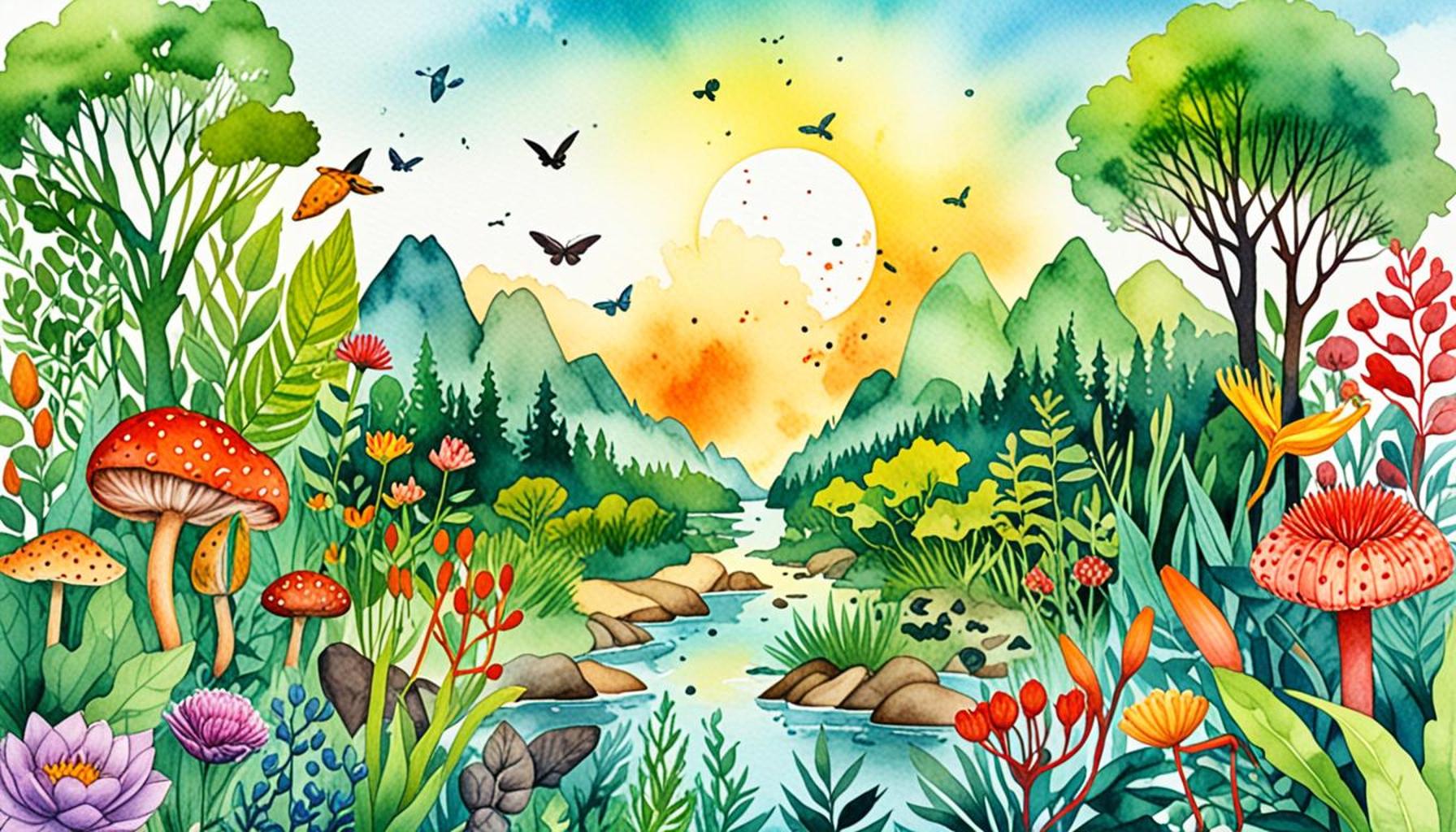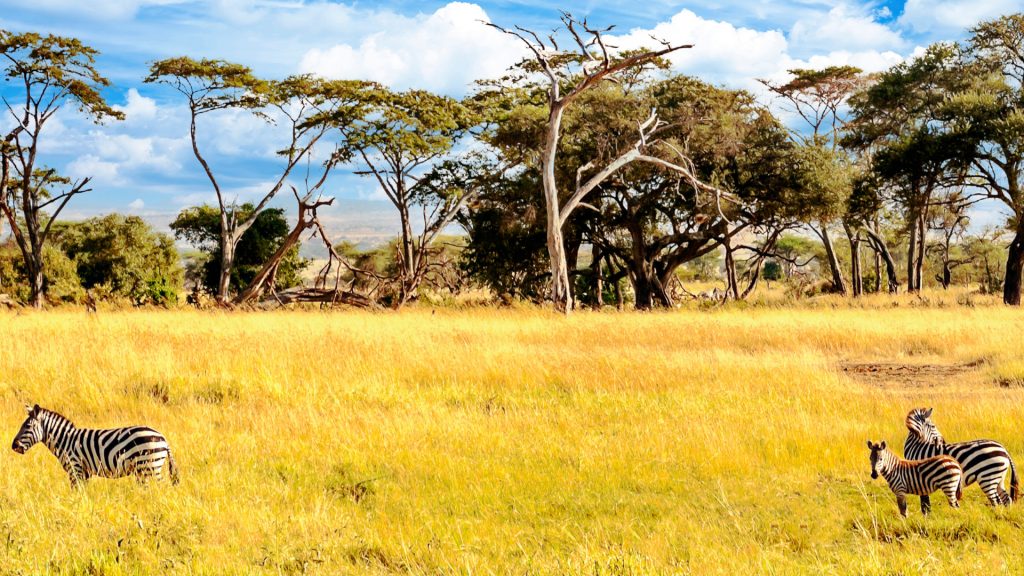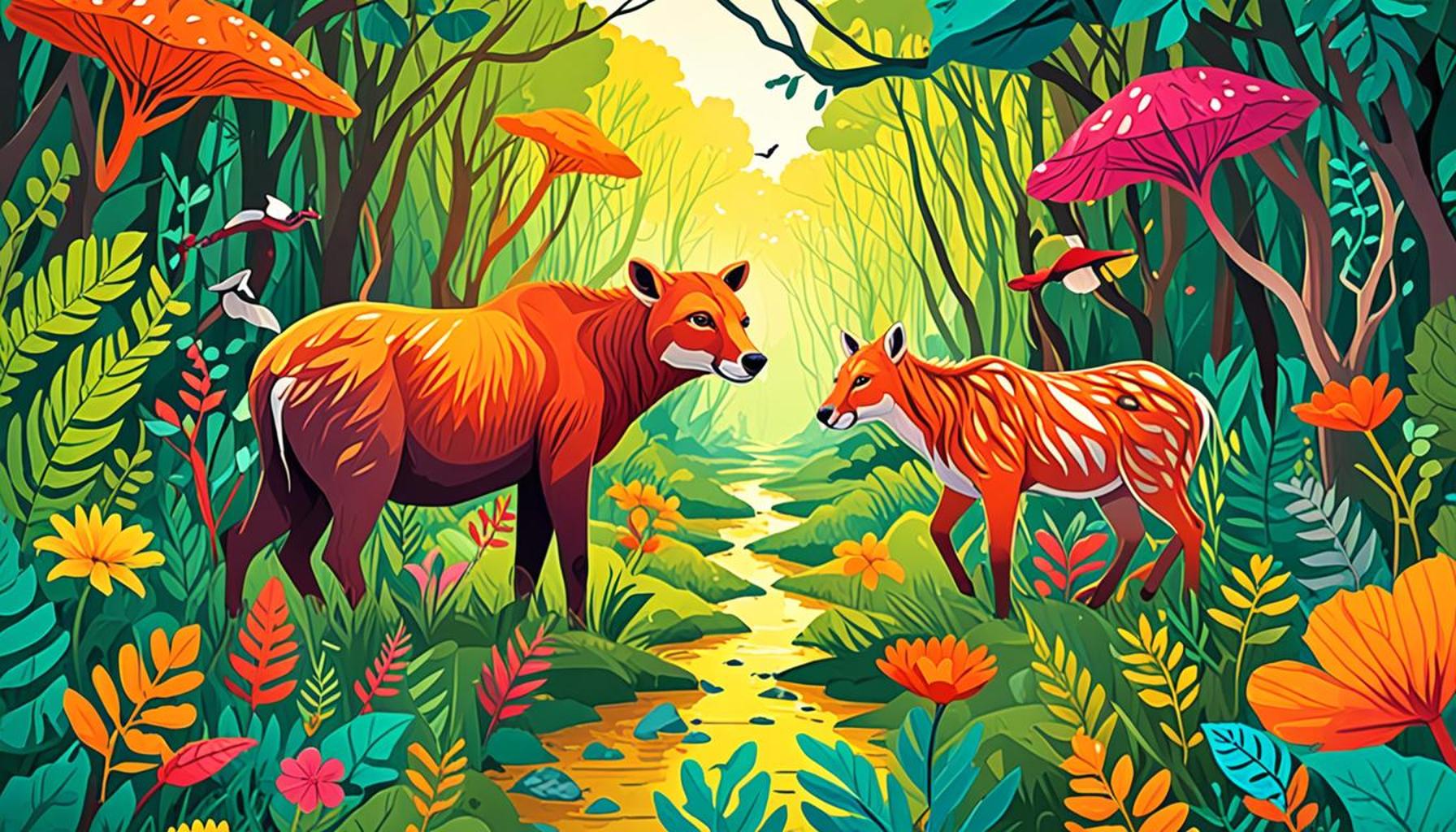The Role of Biological Reserves in Biodiversity Preservation

The Vital Role of Biological Reserves in Ecosystem Balance
Biological reserves are a cornerstone of environmental conservation, acting as a necessary buffer against the growing threats posed by human activity and climate change. These protected areas are crucial in preserving the immense biodiversity that exists on our planet, ensuring that countless species of plants and animals have a safe haven to thrive amid the pressures of urbanization, pollution, and habitat destruction. In the United States, biological reserves play a pivotal role in protecting a broad spectrum of flora and fauna, safeguarding their existence for future generations.
Key Functions of Biological Reserves
Biological reserves fulfill several essential roles that are integral to ecological health and resilience. Here are a few key functions:
- Habitat Protection: Reserves provide safe environments for endangered and vulnerable species, offering them refuge from human encroachment. For instance, the Florida Panther, once on the brink of extinction, has found a sanctuary in the protected areas of the Big Cypress National Preserve, where conservation efforts have been pivotal in increasing its population.
- Ecological Research: These areas present unique opportunities for researchers to study ecosystems and biodiversity. Institutions often leverage reserves like the Driftless Area National Wildlife Refuge in Iowa, where scientists investigate the interactions between species and their habitats, contributing valuable data that informs future conservation strategies.
- Public Education: Biological reserves also serve an educational purpose, helping to raise awareness about the importance of biodiversity and conservation efforts. They often host programs aimed at engaging the public, such as educational workshops and guided tours, enabling visitors to appreciate the richness of nature firsthand.
The Impact of Urbanization and Climate Change
As urbanization expands and climate change accelerates, the threats to natural habitats intensify. Understanding the significance of biological reserves is thus paramount. These reserves act as important refuges that facilitate adaptative responses to environmental changes, ultimately contributing to ecological stability. For example, efforts to restore habitats within Chesapeake Bay have not only improved water quality but also positively impacted local wildlife, demonstrating how targeted conservation can yield significant benefits.
Notable Examples in the United States
Across the United States, several biological reserves stand out for their unique ecosystems and the role they play in biodiversity conservation:

- Everglades National Park: As one of the largest subtropical wilderness areas in the U.S., it is home to an unparalleled variety of wildlife, including the endangered American crocodile and manatees. The park’s vast wetlands are critical for maintaining water quality and providing habitat for migratory birds.
- Yellowstone National Park: Known as the first national park in the world, Yellowstone is famed for its geothermal features and diverse habitats, supporting iconic species such as bison, elk, and grizzly bears. Its protection has been essential for ongoing ecological research and heritage preservation.
- The California Coast: This region is vital for marine biodiversity, featuring ecosystems that include kelp forests, estuaries, and coral reefs. Protecting these areas is crucial for maintaining coastal resilience and supporting fisheries critical to local economies.
Exploring the multifaceted roles of biological reserves reveals their significance beyond mere land preservation. They contribute actively to biodiversity preservation and the overall health of our planet, urging us to recognize the interconnectedness of all living things. By understanding and supporting these vital spaces, we not only protect wildlife but also safeguard our shared environment for generations to come.
SEE ALSO: Click here to read another article
Conservation Strategies Within Biological Reserves
Biological reserves serve as critical laboratories for conservation strategies, providing the ideal setting to test and implement methods aimed at preserving biodiversity. In these protected areas, conservationists can observe the effects of various restoration tactics, which can be adjusted based on real-time ecological feedback. One such strategy is habitat restoration, which involves rehabilitating ecosystems that have been degraded by human activities. This can include replanting native species, removing invasive plants, and restoring natural water flow to ecosystems like wetlands.
Additionally, species recovery programs are frequently conducted within biological reserves. These programs focus on the propagation and reintroduction of species that are endangered or at risk of extinction. For example, the California condor, once on the verge of extinction, has benefited immensely from captive breeding programs initiated within the boundaries of several national parks and reserves, highlighting success achieved through dedicated conservation efforts.
Community Involvement in Conservation
Engaging local communities in conservation efforts is another fundamental aspect of the role that biological reserves play in biodiversity preservation. Many reserves collaborate with indigenous populations and local residents to establish sustainable practices that not only protect wildlife but also support the livelihoods of those who depend on natural resources. This partnership fosters a sense of stewardship among community members, as their cultural practices and traditional knowledge can enhance conservation initiatives.
Programs that promote eco-tourism are increasingly being integrated into the management of biological reserves. This approach allows local communities to gain economically from the preservation of their natural heritage, as visitors flock to explore these stunning landscapes and observe their rich biodiversity. Notably, successful eco-tourism initiatives in areas like the Great Smoky Mountains National Park demonstrate how revenue generated from tourism can be reinvested into conservation projects, creating a win-win situation for both wildlife and people.
Long-Term Monitoring and Management
Long-term monitoring is another key function of biological reserves that directly contributes to biodiversity preservation. By keeping meticulous records of the flora and fauna present, conservationists can detect changes in species populations and ecosystem health, allowing them to implement timely interventions. This rigorous data collection is vital in understanding the impacts of climate change, invasive species, and habitat loss. Reserves like the Hawaiian Islands National Wildlife Refuge offer researchers the opportunity to observe unique ecosystems that are often not found elsewhere, providing invaluable insights into species adaptation and resilience.
In summary, biological reserves are much more than just protected lands; they represent a framework for innovative conservation strategies and community involvement. Through habitat restoration, species recovery, community engagement, and long-term monitoring, these reserves are key players in the ongoing battle to preserve the planet’s biodiversity. The intricate tapestry of life that flourishes within these sanctuaries is a testament to the need for continued investment and support in biological preservation efforts. As we delve deeper into this critical topic, it becomes clear that our survival is intricately linked to the protection of biodiversity and the ecosystems that sustain us.
Biological reserves play a pivotal role in the **preservation of biodiversity**, serving as safe havens for various species and ecosystems that are increasingly threatened by human activities. These reserves are essential for maintaining ecological balance and providing **critical habitats** for flora and fauna. They help protect endangered species from extinction and ensure that genetic diversity is preserved.Moreover, biological reserves often serve as **natural laboratories**, facilitating scientific research and education about ecosystems, species interactions, and the impacts of climate change. Researchers can study how these environments function, offering insights that can be applied to conservation efforts globally. The rich biodiversity within these reserves is a treasure trove of potential resources, from medicinal plants to raw materials, emphasizing the need for their protection.The impact of biological reserves extends beyond their borders, influencing local communities and economies. These areas are often popular destinations for ecotourism, which not only generates income but also raises awareness about conservation. Visitors to biological reserves gain firsthand experience of nature’s beauty, fostering a stronger appreciation for biodiversity and motivating efforts to protect it.To further understand the multifaceted benefits of biological reserves in relation to biodiversity preservation, consider the following table outlining some key advantages and their implications:
| Advantage | Description |
|---|---|
| Habitat Protection | Biological reserves safeguard critical habitats, allowing diverse species to thrive. |
| Research Opportunities | They provide a platform for scientific research, fostering a better understanding of ecosystems. |
In summary, the strategic establishment and management of biological reserves is crucial for preserving biodiversity. By protecting these vital ecosystems and supporting associated research and ecotourism, we can enhance our understanding and appreciation for the natural world, ultimately leading to more effective conservation strategies.
CHECK OUT: Click here to explore more
Education and Research Opportunities in Biological Reserves
Biological reserves also serve as vital centers for education and research, contributing significantly to biodiversity preservation. These protected areas are not only refuges for wildlife but also outdoor classrooms and laboratories where students, researchers, and conservationists can observe and study ecological processes in real time. Educational programs designed for schools and universities often incorporate field studies in biological reserves, allowing students to engage firsthand with nature while learning about ecological principles and conservation strategies.
Moreover, research conducted within biological reserves is instrumental in advancing our understanding of biodiversity. Scholars from various disciplines—ecology, botany, zoology, and environmental science—conduct studies that monitor ecosystem health and species interactions. For instance, projects like the Long-Term Ecological Research (LTER) network, which includes several biological reserves across the United States, gather extensive data on how climate change and human activity affect regional ecosystems. This wealth of information not only informs local conservation efforts but also influences global sustainability policies.
Technological Innovations Enhancing Conservation
Technological advancements also play a pivotal role within biological reserves as conservationists adopt innovative tools and methods to monitor and protect biodiversity. The use of remote sensing technology, for instance, enables scientists to assess changes in land use and vegetation cover across extensive areas without the need for invasive methods. Drones equipped with cameras and sensors are being used to survey wildlife populations, mapping their habitats and tracking movements, which is essential for understanding species dynamics and planning effective management strategies.
In addition, genomic studies are increasingly applied within biological reserves to examine the genetic diversity of species. By analyzing genetic material, researchers can identify populations that may be particularly vulnerable to disease or climate change, assisting in the development of targeted conservation actions. For example, the use of DNA barcoding in reserves has helped identify various plant and animal species, including previously unrecognized taxa, enriching our understanding of biodiversity.
Global Significance of Biological Reserves
The impact of biological reserves extends beyond local ecosystems, contributing to global biodiversity goals. The establishment of reserves aligns with international commitments, such as the Convention on Biological Diversity, which emphasizes the importance of preserving ecosystems and the services they provide. By maintaining biological reserves, countries can establish sanctuaries that serve as backbones of conservation networks, facilitating migration and dispersal of species across landscapes.
For instance, the Yellowstone to Yukon Conservation Initiative aims to connect protected areas across a vast swath of North America, promoting wildlife corridors that allow species to adapt to changing environmental conditions. By linking biological reserves and other protected areas, conservationists enhance genetic exchange among populations, thereby improving the resilience of biodiversity against threats such as habitat fragmentation and climate change.
Ultimately, the multi-faceted role of biological reserves in biodiversity preservation is profound and far-reaching. They are invaluable not only for conserving endangered species and fragile ecosystems but also for educating future generations, promoting innovative research, and contributing to global conservation efforts. The continued support for these critical areas is essential, as they stand as bastions of hope for preserving the rich tapestry of life on our planet.
SEE ALSO: Click here to read another article
Conclusion
In conclusion, biological reserves play an indispensable role in the global effort to preserve biodiversity. By serving as protected sanctuaries for various species and ecosystems, these reserves are critical for maintaining ecological balance. Their contribution goes beyond mere conservation; they are essential sites for education, research, and technological innovation, facilitating a deeper understanding of the intricate relationships within our natural world. Through initiatives such as the Yellowstone to Yukon Conservation Initiative, biological reserves create connectivity among habitats, enabling species to adapt to environmental changes and fortifying genetic diversity.
Moreover, our commitment to biological reserves aligns with international biodiversity goals that underline the need for sustainable ecosystems. They exemplify that proactive conservation measures can yield significant returns, benefiting not only wildlife but also the human populations that depend on healthy ecosystems for resources and climate regulation. The extensive data gathered from these protected areas empowers policymakers and scientists to make informed decisions that promote resilience against emerging environmental challenges.
As stewards of the planet, it is paramount that we advocate for the continued support and expansion of biological reserves. By doing so, we reinforce a legacy of conservation that nourishes future generations and preserves the incredible diversity of life that sustains us all. The time to act is now, as the fate of our planet and its myriad species hangs in the balance, urging us to recognize and champion the vital role these reserves play in safeguarding **biodiversity**.



